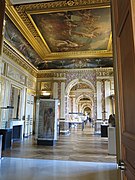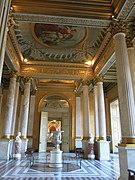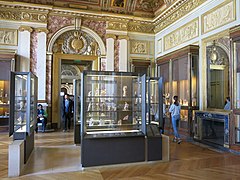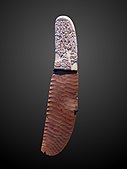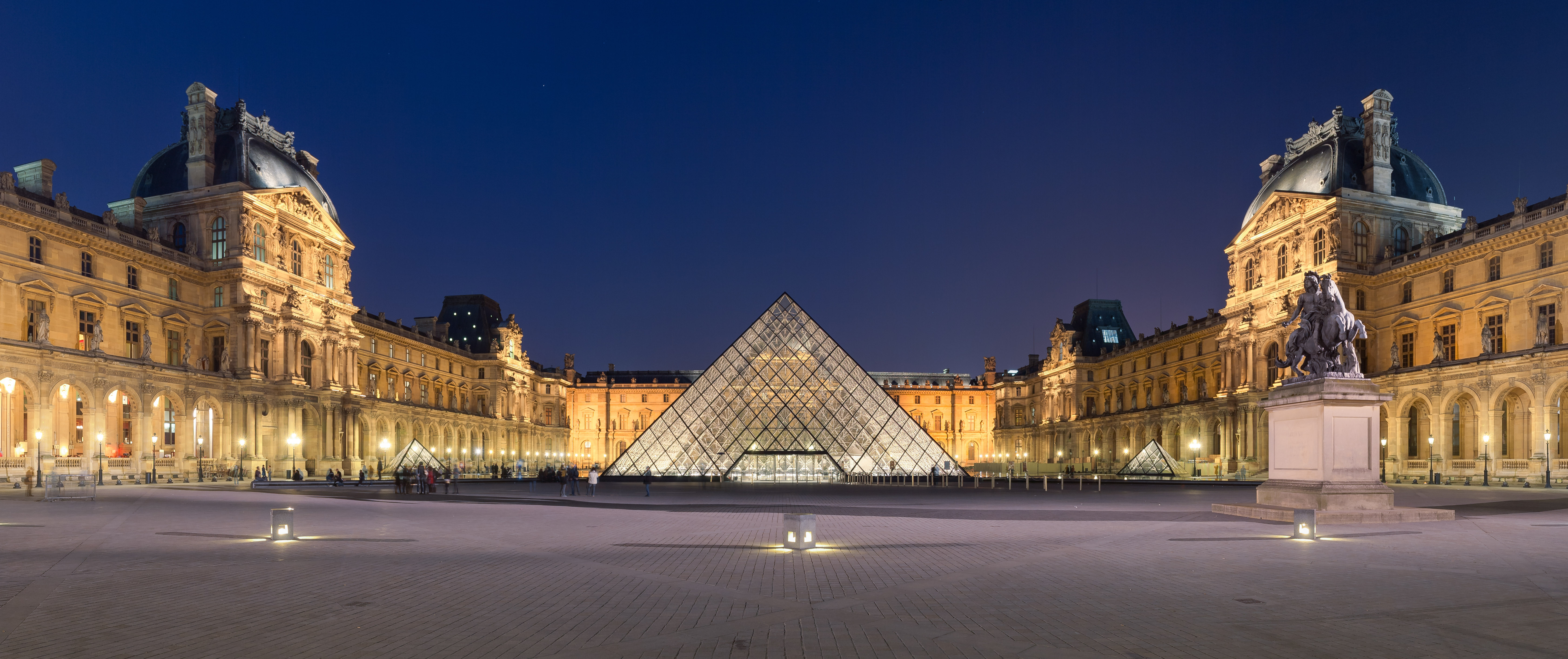
Louvre
The Louvre (English: /ˈluːv(rə)/ LOOV(-rə)),[4] or the Louvre Museum (French: Musée du Louvre [myze dy luvʁ] ), is a national art museum in Paris, France. It is located on the Right Bank of the Seine in the city's 1st arrondissement (district or ward) and home to some of the most canonical works of Western art, including the Mona Lisa, Venus de Milo, and Winged Victory. The museum is housed in the Louvre Palace, originally built in the late 12th to 13th century under Philip II. Remnants of the Medieval Louvre fortress are visible in the basement of the museum. Due to urban expansion, the fortress eventually lost its defensive function, and in 1546 Francis I converted it into the primary residence of the French kings.[5]
This article is about the museum. For the building, see Louvre Palace. For other uses, see Louvre (disambiguation).Established
10 August 1793
Musée du Louvre, 75001, Paris, France
8.9 million (2023)[3]
- Ranked 1st nationally
- Ranked 1st globally
Marie-Laure de Rochebrune
The building was extended many times to form the present Louvre Palace. In 1682, Louis XIV chose the Palace of Versailles for his household, leaving the Louvre primarily as a place to display the royal collection, including, from 1692, a collection of ancient Greek and Roman sculpture.[6] In 1692, the building was occupied by the Académie des Inscriptions et Belles-Lettres and the Académie Royale de Peinture et de Sculpture, which in 1699 held the first of a series of salons. The Académie remained at the Louvre for 100 years.[7] During the French Revolution, the National Assembly decreed that the Louvre should be used as a museum to display the nation's masterpieces.
The museum opened on 10 August 1793 with an exhibition of 537 paintings, the majority of the works being royal and confiscated church property. Because of structural problems with the building, the museum was closed from 1796 until 1801. The collection was increased under Napoleon and the museum was renamed Musée Napoléon, but after Napoleon's abdication, many works seized by his armies were returned to their original owners. The collection was further increased during the reigns of Louis XVIII and Charles X, and during the Second French Empire the museum gained 20,000 pieces. Holdings have grown steadily through donations and bequests since the Third Republic. The collection is divided among eight curatorial departments: Egyptian Antiquities; Near Eastern Antiquities; Greek, Etruscan, and Roman Antiquities; Islamic Art; Sculpture; Decorative Arts; Paintings; Prints and Drawings.
The Musée du Louvre contains approximately 500,000 objects[8] and displays 35,000 works of art in eight curatorial departments with more than 60,600 m2 (652,000 sq ft) dedicated to the permanent collection.[2] The Louvre exhibits sculptures, objets d'art, paintings, drawings, and archaeological finds. At any given point in time, approximately 38,000 objects from prehistory to the 21st century are being exhibited over an area of 72,735 m2 (782,910 sq ft), making it the largest museum in the world. It received 8.9 million visitors in 2023, 14 percent more than in 2022, but still below the 10.1 million visitors in 2018. The Louvre is the most-visited museum in the world, ahead of the second-place Vatican Museums.[9][10]
The Louvre's ancient art collections are to a significant extent the product of excavations, some of which the museum sponsored under various legal regimes over time, often as a companion to France's diplomacy and/or colonial enterprises. In the Rotonde d'Apollon, a carved marble panel lists a number of such campaigns, led by:
The rest of the plaque combines donors of archaeological items, many of whom were archaeologists themselves, and other archaeologists whose excavations contributed to the Louvre's collections:

